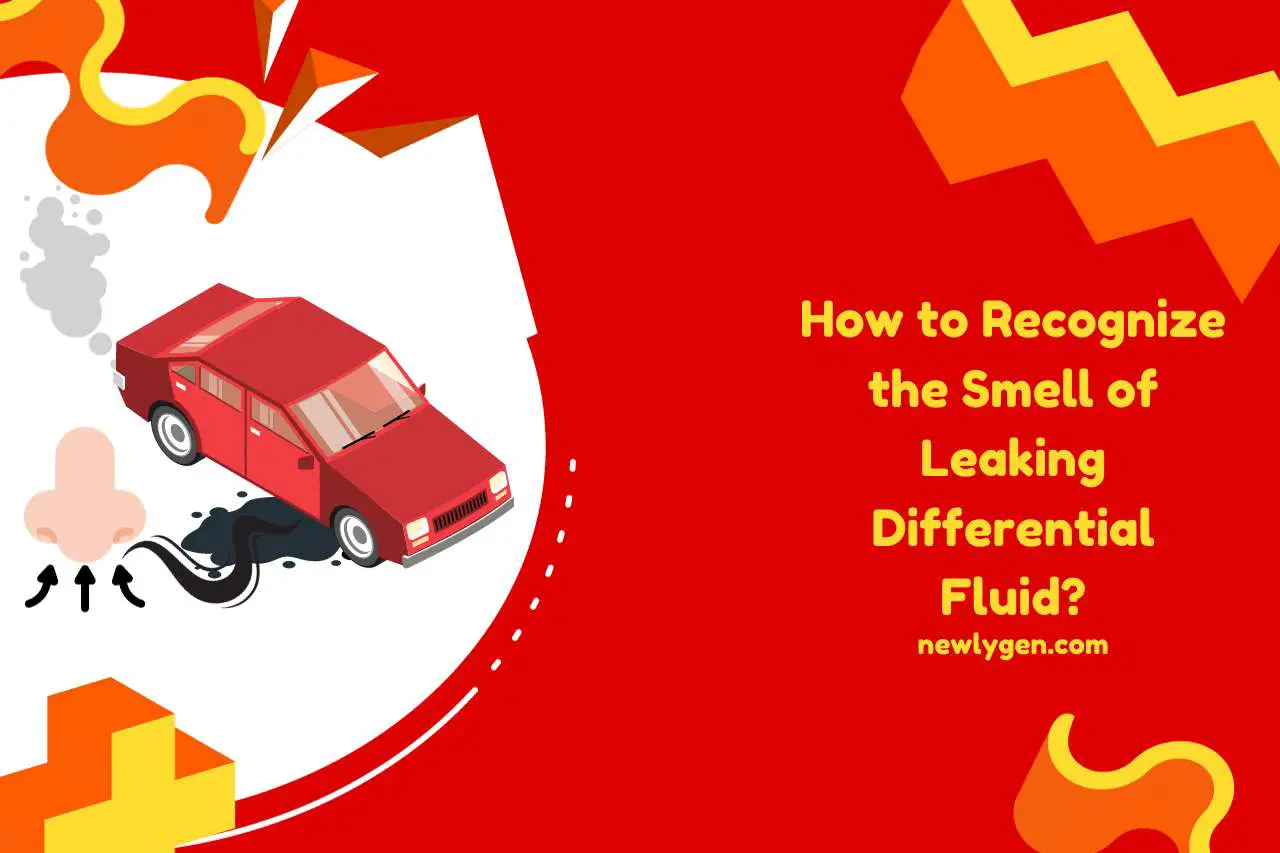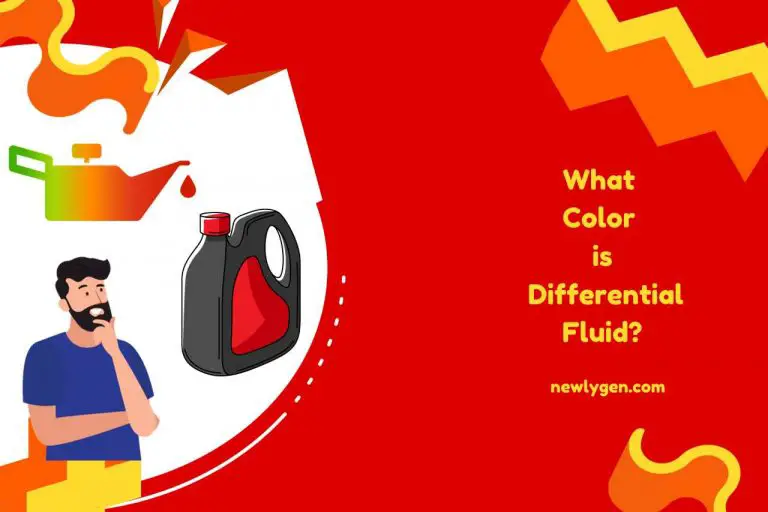What does Differential Fluid Smell Like? Unraveling the Mystery!
“What does differential fluid smell like?” is not an abnormal driver-doubt because it can shed light on the health and performance of any vehicle. As a critical component, the differential fluid’s aroma offers insight into its condition and alerts drivers of potential issues. Thus, it is worth knowing the exact smell of differential fluid. From fresh fluid scents to the warning whiffs of leaks or overheating, understanding these olfactory cues helps you to ensure optimal vehicle maintenance. Hence, join the discussion to have a problem-free driving experience!
What does Differential Fluid Smell Like?
To many, the scent of differential fluid can be best described as a distinct, pungent, sulfur-like aroma. So, the smell of differential fluid is different when compared to other automotive fluids.
Differential fluid, vital for the seamless operation of your vehicle’s drivetrain, possesses a characteristic smell due to the additives mixed with the base oil. These additives, including anti-wear agents and extreme pressure agents, contribute to the fluid’s odor.
Unlike engine oil or transmission fluid, differential oil’s smell is sharper, often likened to rotten eggs or sulfur.
The presence of sulfur-based compounds in the fluid helps it handle extreme pressures, but it’s this very component that imparts the strong scent. So, why do you need to recognize this awful smell? The reason why, a sudden or intensified aroma might hint at leaks or other mechanical issues.
In essence, while the smell might not be the most pleasant, it’s a clear identifier of differential fluid in the automotive world. Familiarity with this aroma can be beneficial for vehicle owners and mechanics alike.
Is the Smell of Fresh Differential Fluid Different from Used Fluid?
Yes, of course! The aroma of fresh differential fluid differs from the used fluid. While both carry the characteristic sulfur-like scent, used fluid often has a more burnt and acrid quality to it.
Fresh differential fluid, straight out of the container, possesses a cleaner, more distinct sulfuric aroma. This smell results from the new additives and the untainted base oil.
However, as the fluid operates within the vehicle, it endures extreme temperatures and friction. The following points will explain what happens to the differential fluid over time.
- Degradation: The fluid degrades, and this degradation brings about a stronger, burnt smell.
- Contaminants: Used differential fluid collects metal shavings and debris, altering its scent profile.
Accordingly, the smell of fluid changes with time. Noticing a change in the fluid’s aroma can indicate wear or potential issues, urging vehicle owners to replace or inspect the fluid.
What is the Smell of Differential Fluid that has Gone Bad?
The smell of differential fluid that has gone bad is unmistakably more acrid and burnt compared to its original sulfuric aroma.
As we discussed above, when differential fluid ages within the vehicle’s system, it’s subjected to extreme conditions. This exposure, combined with accumulating contaminants, results in significant changes to its scent and properties.
Indeed, bad differential fluid often gives off a much sharper, almost rancid scent. Continuous exposure to heat and friction imparts a burnt smell, indicative of degraded fluid quality.
A shift from the standard sulfuric aroma to this acrid version is an alarming sign. Thus, you are advised to check the condition of the differential fluid and replace it.
Recognizing and acting upon this altered scent can prevent further complications in your vehicle’s drivetrain and ensure safer, smoother rides.



How to Recognize the Smell of Leaking Differential Fluid?
Recognizing the smell of leaking differential fluid is pivotal, as it typically has a distinct sulfuric or “rotten egg” aroma, intensified when the fluid is old or degraded.
When you suspect a leak, it’s important to confirm your suspicions and address them promptly. Here is a quick guide when you have to face such a case.
- Sniff Around: Approach your vehicle’s rear, where the differential is located. If the pungent sulfuric scent is strong, there is a high chance of a leak.
- Visual Check: While the smell can be an indicator, spotting dark, oily stains beneath the vehicle or on the differential seals solidifies the diagnosis.
- Consistency Matters: Texture is another factor that helps to determine the condition of differential fluid. Fresh differential fluid has a smoother texture. If you touch it and feel gritty or thick residues, it could indicate aging and contamination.
- Driving Indications: A noticeable difference in driving performance paired with the smell is a clear sign. Listen for noises or feel for vibrations, as they often accompany fluid issues.
What does Burning Differential Oil Smell Like?
The aroma of burning differential oil is notably acrid and can be likened to a pungent combination of burnt rubber and sulfur.
When differential oil begins to overheat or burn, it releases an unmistakable, sharp scent that you probably cannot bear. This olfactory signal is a warning to drivers, indicating potential issues that need immediate attention. Overheating can occur due to several reasons like these.
- Age of Fluid: Old or degraded fluid loses its lubricating properties, causing more friction and heat.
- Low Fluid Levels: Insufficient amounts of differential oil might lead to increased temperatures due to a lack of lubrication.
- Contaminants: The presence of metal shavings or dirt can cause the fluid to overheat.
Accordingly, it is a must to change differential fluid when it is necessary to avoid these kinds of bothersome signals and vehicle damage.
You May Also Like
- Can Bad Differential Fluid Cause Vibration? Unveiling the Truth!!!
- Can you Overfill Differential Fluid? Understanding the Basics!
- How to Replace Rear Differential Fluid? Mastering Vehicle Maintenance!
- How Often to Change Differential Fluid? Understanding Your Car!
- Is Differential Fluid Flammable? Unmasking Myths!
- Does Differential Fluid Need to be Changed? Ensuring Your Car’s Health!
- Cost to Change Differential Fluid – (DIY vs Professional Services)
- What Color is Differential Fluid? Decoding the Shades!







